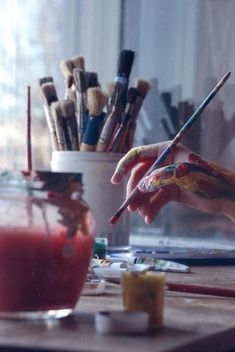The European Renaissance, a period spanning roughly from the 14th to the 17th century, marked a profound transformation in art, philosophy, and culture. Artists like Leonardo da Vinci and Michelangelo not only defined this era but also laid the groundwork for future artistic movements. Their techniques and philosophies continue to resonate today, influencing contemporary artists across Europe and beyond.
## **Enduring Techniques and Innovations**
### **Leonardo da Vinci**
Leonardo da Vinci's contributions to art are manifold, particularly his pioneering use of **sfumato**, a technique that creates a soft transition between colors and tones. This method allows for a more realistic portrayal of human emotions and depth. Modern artists often employ similar techniques in painting and digital art, emphasizing the importance of light and shadow to evoke mood and atmosphere. Da Vinci’s meticulous studies of anatomy also set a standard for realism that remains influential in contemporary figurative art.
His iconic works, such as the **Mona Lisa** and **The Last Supper**, showcase not only technical mastery but also an understanding of human psychology. The emotional complexity captured in these pieces continues to inspire artists who seek to convey deeper narratives through their work.
### **Michelangelo**
Michelangelo's impact is equally significant, particularly in sculpture and fresco painting. His ability to capture the human form with extraordinary detail has inspired generations of sculptors. The **David**, for instance, exemplifies the Renaissance ideal of beauty and proportion, serving as a benchmark for anatomical accuracy. Modern sculptors often reference Michelangelo's techniques when exploring the human figure, striving to achieve similar levels of expressiveness.
Moreover, Michelangelo’s work on the **Sistine Chapel** ceiling introduced innovative compositions that blend narrative with grandiosity. Contemporary muralists and painters frequently draw on his dramatic use of scale and perspective to create immersive experiences in public spaces.
## **Philosophical Foundations**
The philosophies underpinning Renaissance art also have lasting implications today. The emphasis on humanism—an ideology that centers on human experience and individual potential—has permeated modern artistic expressions. Artists today continue to explore themes of identity, existence, and emotion, reflecting the Renaissance belief in the importance of personal experience.
Both Leonardo and Michelangelo grappled with existential questions through their art. Leonardo's scientific curiosity led him to explore the relationship between humanity and nature, while Michelangelo’s works often reflect a struggle between divine aspiration and human limitation. This duality resonates with contemporary artists who seek to address complex societal issues through their work.
## **Contemporary Influences**
The influence of Renaissance masters is evident in various modern art movements:
- **Realism**: Artists strive for lifelike representations reminiscent of Renaissance techniques.
- **Expressionism**: The emotional depth found in works by da Vinci and Michelangelo inspires artists to convey personal feelings through exaggerated forms.
- **Street Art**: Many contemporary street artists incorporate classical techniques into their murals, blending historical references with modern themes.
Exhibitions celebrating Renaissance art frequently attract contemporary artists who find inspiration in these past masters. Collaborations between classical institutions and modern creators foster an environment where traditional techniques are reinterpreted through innovative lenses.
## **Conclusion**
The legacy of European Renaissance artists like Leonardo da Vinci and Michelangelo is deeply embedded in the fabric of modern art. Their techniques, philosophies, and emotional depth continue to inspire contemporary artists across various mediums. As we navigate an increasingly complex world, the enduring influence of these past masters serves as a reminder of art's power to reflect human experience and provoke thought across generations.
Citations:
[1] https://www.historyextra.com/period/renaissance/leonardo-michelangelo-rivalry-inspiration-artists/
[2] https://www.ipl.org/essay/Michelangelos-Impact-On-Modern-Art-Essay-FKW2Y42FJED6
[3] https://www.thecollector.com/leonardo-da-vinci-michelangelo-competition/
[4] https://inartematt.com/2020/11/01/leonardo-and-michelangelo-an-ideological-rivalry/
[5] https://www.britannica.com/biography/Michelangelo/Legacy-and-influence
[6] https://lithub.com/sorry-michelangelo-da-vinci-was-the-true-master-of-the-human-form-in-art/
[7] https://aithor.com/essay-examples/the-influence-of-renaissance-art-on-modern-art
[8] https://www.tingatingaart.com/blogs/articles/motifs-in-african-paintings


No comments:
Post a Comment